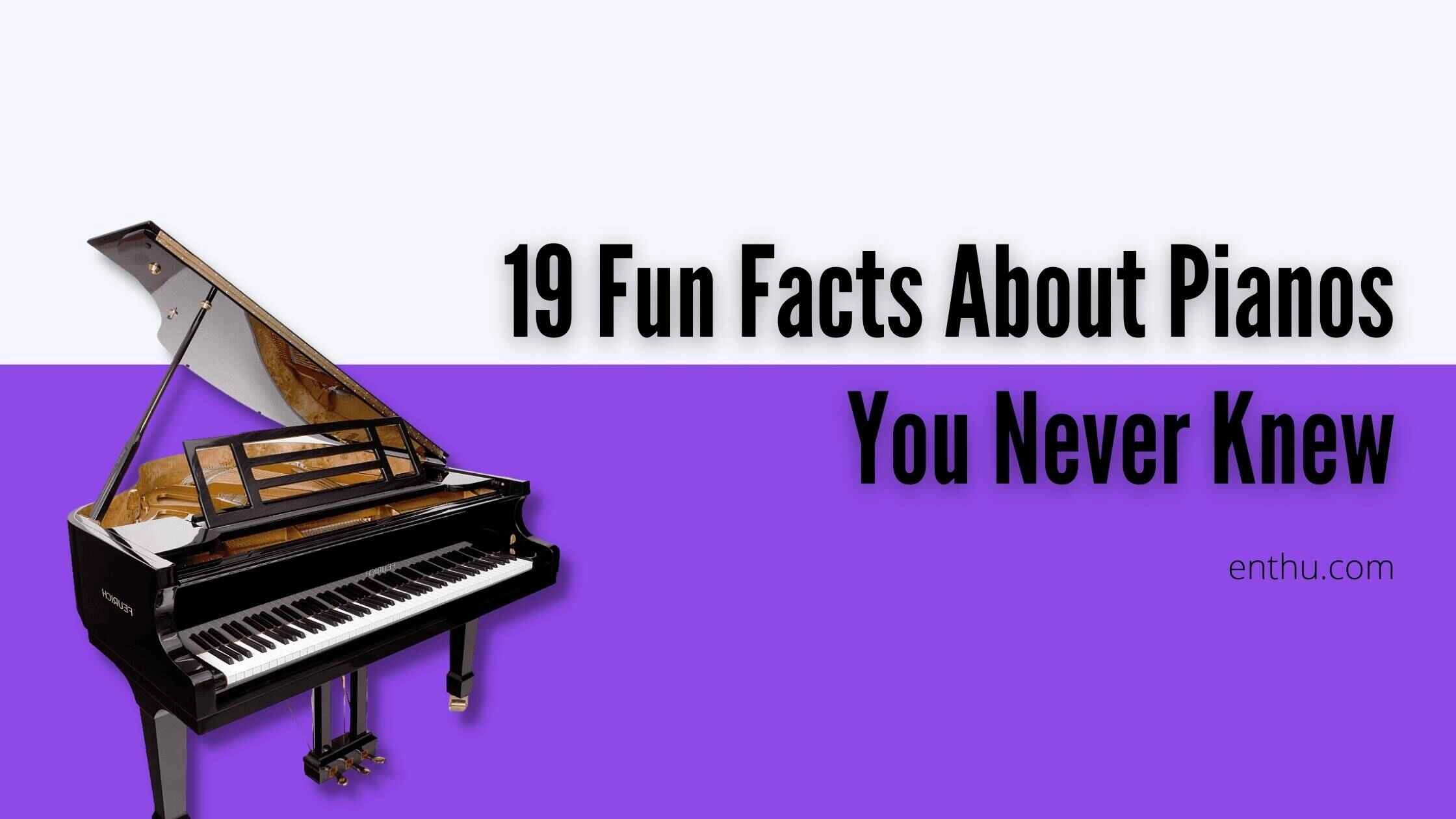Learning to play the piano is definitely different from learning other skills. You begin your journey with the hope of playing music for yourself and for others.
You want to play Mozart, Beethoven, Bach, and other popular piano pieces. Sometimes, such plans appear like a distant dream while practicing piano notes and scales, but not anymore.
Dear readers, I have the easiest Beethoven piano pieces for you. You can go through the list and pick your favorite classical piece without any fear.

11 Easy and Most Famous Beethoven Piano Pieces
1. Ecossaise in Eb Major, WoO 86
The Écossaise is a musical form and a Scottish country dance developed in France. By the end of the 18th century, it was quite popular in Britain and France.
It was usually danced 2/4 times in two lines when men faced women. As the dance progresses, couples advance to the head of the line. Beethoven adapted this musical form and composed WoO 83, WoO 86, WoO 22, and WoO 23.
The WoO 86 is the easiest of all of them. It's easy and perfect for beginners. After mastering Ecossaise in Eb Major, one can take up WoO 86 Ecossaise in G Major, WoO 23.
The Écossaise is a musical form and a Scottish country dance developed in France. By the end of the 18th century, it was quite popular in Britain and France.
It was usually danced 2/4 times in two lines when men faced women. As the dance progresses, couples advance to the head of the line. Beethoven adapted this musical form and composed WoO 83, WoO 86, WoO 22, and WoO 23.
The WoO 86 is the easiest of all of them. It's easy and perfect for beginners. After mastering Ecossaise in Eb Major, one can take up WoO 86 Ecossaise in G Major, WoO 23.
2. German Dance in E flat Major
Ludwig van Beethoven has composed several collections of German dances, but the German Dance in E flat Major is the easiest one. An intermediate player can easily master it, and a beginner can also try their hand.

You can also check out the other WoO 13 dances, such as the German Dance No 1 in D major, WoO13, and the German Dance No 5 in F major, WoO13.
3. "Für Elise"
"Für Elise" is not only my favorite Beethoven piece but also one of my favorite piano pieces. It's dreamy, sensual, and makes you feel magical.
Beethoven wrote around 30 Bagatelles, and "Für Elise" is the Bagatelle op. 59 in A minor. It's easy, and an intermediate pianist can play this with only a few months of practice.
4. 6th Bagatelle, Op 33 in D major
Ludwig van Beethoven composed the Bagatelles, Op. 33, for solo piano performances. He composed the pieces in 1801–02 and published them in 1803 through a Viennese publisher known as Bureau des arts et d'industrie.
This composition contained seven bagatelles. They are basically typical of Beethoven's early style but also resemble features of the early Classical period. Out of the seven Bagatelles, the sixth one is the easiest piece when played in D major.
I recommend beginners and intermediate players to try to play these pieces.
Ludwig van Beethoven composed the Bagatelles, Op. 33, for solo piano performances. He composed the pieces in 1801–02 and published them in 1803 through a Viennese publisher known as Bureau des arts et d'industrie.
This composition contained seven bagatelles. They are basically typical of Beethoven's early style but also resemble features of the early Classical period.
Out of the seven Bagatelles, the sixth one is the easiest piece when played in D major. I recommend beginners and intermediate players to try to play these pieces.
5. Pathétique
Beethoven's "Pathetique" or Sonata No. 8 in C minor, Op. 13 was written in 1798. He composed it when he was only 27 years old and published it in 1799. Regardless of his age, this piece has remained one of his most celebrated compositions.
The composer dedicated "Pathetique" to his friend Prince Karl von Lichnowsky. It's one of the few pieces that Beethoven named himself. This piano piece is easier compared to most of his pieces.
However, only an advanced pianist would be able to play the complete piece. An intermediate can play the middle part, which is brilliant in its own right.
Beethoven's "Pathetique" or Sonata No. 8 in C minor, Op. 13 was written in 1798. He composed it when he was only 27 years old and published it in 1799.
Regardless of his age, this piece has remained one of his most celebrated compositions. The composer dedicated "Pathetique" to his friend Prince Karl von Lichnowsky. It's one of the few pieces that Beethoven named himself.
This piano piece is easier compared to most of his pieces. However, only an advanced pianist would be able to play the complete piece. An intermediate can play the middle part, which is brilliant in its own right.
6. 1st Bagatelle Op 126
Beethoven composed Bagatelles, Op. 126 in the later phase of his career and dedicated them to his brother Nikolaus Johann van Beethoven.
Another interesting fact about Bagatelle, Op 126 is that Beethoven told his publisher, Schott Music, that those pieces "are probably the best I've written."
I recommend the first Bagatelle from Op 126 to intermediate players. It starts out in a steady tempo, but it picks up the pace by bar 21. It's suitable for slightly experienced piano players.

Beethoven composed Bagatelles, Op. 126 in the later phase of his career and dedicated them to his brother Nikolaus Johann van Beethoven.
Another interesting fact about Bagatelle, Op 126 is that Beethoven told his publisher, Schott Music, that those pieces "are probably the best I've written."
I recommend the first Bagatelle from Op 126 to intermediate players. It starts out in a steady tempo, but it picks up the pace by bar 21. It's suitable for slightly experienced piano players.
7. Moonlight Sonata
Moonlight Sonata is the popular name for Beethoven's Sonata No. 14 in C-sharp minor. He composed It around 1801 and published it in 1802, dedicating it to his student Countess Giulietta Guicciardi.
It comes in three movements–Adagio sostenuto, Allegretto, and Presto agitato. This piano piece is one of the most popular Beethoven compositions, along with Fur Elise.
Even though the notes appear challenging, an intermediate pianist can play this within a few months of practice.
8. Symphony No. 7 in A major, Opus 92 - II. Allegretto
The Allegretto from his Seventh symphony has a strange quality of numbing its audience's senses and filling their hearts with melancholic pangs. Despite the sad second movement, this piano piece is overall optimistic.
He published the work in 1811 after returning from treatment in Bohemia. There he met Rahel Lavin and Amalie Sebald, two women who greatly influenced his creativity during the summer of 1811. Not to forget, Beethoven also met Goethe while working on this piece.
It was performed for the first time on 8th December 1813 under Beethoven's direction and gained instant popularity across the whole of Europe. This piece is definitely one of the most popular pieces by Beethoven and is most recommended for advanced players only.
The Allegretto from his Seventh symphony has a strange quality of numbing its audience's senses and filling their hearts with melancholic pangs. Despite the sad second movement, this piano piece is overall optimistic.
He published the work in 1811 after returning from treatment in Bohemia. There he met Rahel Lavin and Amalie Sebald, two women who greatly influenced his creativity during the summer of 1811. Not to forget, Beethoven also met Goethe while working on this piece.
It was performed for the first time on 8th December 1813 under Beethoven's direction and gained instant popularity across the whole of Europe. This piece is definitely one of the most popular pieces by Beethoven and is most recommended for advanced players only.
9. Adagio un poco moto
While composing this piano piece, Beethoven had already lost his faith in Napoleon. He came to terms with the fact that his idol Bonaparte, the flagbearer of the people's Revolution, had become a bloody tyrant and oppressor of the Viennese people.
Therefore, Concerto No. 5 in E flat major, Op. 73 "Emperor" and other last piano pieces hold the weight of this tragic time, which often forced Beethoven to interrupt his work owing to the disturbance caused by the Napoleonic armies.
In the light of this cruel realization, Beethoven named this "The Emperor," dedicating it to his Imperial Highness Archduke Rodolphe, who was his patron and student.
While composing this piano piece, Beethoven had already lost his faith in Napoleon. He came to terms with the fact that his idol Bonaparte, the flagbearer of the people's Revolution, had become a bloody tyrant and oppressor of the Viennese people.
Therefore, Concerto No. 5 in E flat major, Op. 73 "Emperor" and other last piano pieces hold the weight of this tragic time, which often forced Beethoven to interrupt his work owing to the disturbance caused by the Napoleonic armies.
In the light of this cruel realization, Beethoven named this "The Emperor," dedicating it to his Imperial Highness Archduke Rodolphe, who was his patron and student.
10. Symphony No. 6 – Pastoral
Earlier Beethoven sub-titled this piano piece as the "Recollection of country life," It was inscribed on the 1826 score.
The composer finished the symphony in 1808, and it was first performed along with the fifth symphony in the Theater an der Wien in the same year. Some say the concert was four hours long.
Unlike most symphonies, it has five movements. Given its difficulty level, it's commonly recommended for intermediate and expert pianists.
Earlier Beethoven sub-titled this piano piece as the "Recollection of country life," It was inscribed on the 1826 score.
The composer finished the symphony in 1808, and it was first performed along with the fifth symphony in the Theater an der Wien in the same year.
Some say the concert was four hours long. Unlike most symphonies, it has five movements. Given its difficulty level, it's commonly recommended for intermediate and expert pianists.
11. The Tempest
The tempest or Sonata No. 17 in D minor, Opus 31 - III. Allegretto is one of the most powerful piano pieces by Beethoven. If you listen to it carefully, you would feel as if it's the musical translation of Shakespeare's play The Tempest.
The composition invokes fear of an upcoming storm in the hearts of its listeners and, at the same time, pushes you to unknown tranquility. This piece is also for piano experts or advanced pianists.


Conclusion
Be it the intoxicating melody in Fur Elise or the fierce awakeness in The Tempest, Beethoven always captivates his audience as if they're listening to him for the first time.
The above-listed piano pieces are the most beautiful music created by this composer. You maybe a beginner or an advanced pianist, but I am sure you will find the perfect Beethoven piece that you can play.
FAQs
1) What are the 3 most famous Beethoven piano sonatas?
The three most famous Beethoven piano sonatas are the Moonlight Sonata, the Pathétique Sonata, and the Romance for Violin and Piano No. 5. While all of these compositions are amazing in their own right, they have also become staples of Western classical music repertoire.
2) What is Beethoven's most famous piano piece?
The Moonlight Sonata is by far Beethoven's most famous and well-loved piano piece. It was written in 1795, shortly after he had moved to Vienna and began his earnest struggle as a composer.
The sonata is considered to be among the greatest works of Romantic period music, and it has been performed by many great pianists over the years, including Arturo Toscanini, Wilhelm Fink, Sviatoslav Richter, André Previn, Yo-Yo Ma―to name just a few.
3) What were Beethoven's favorite pieces?
Beethoven's favorite piece was Pastoral, Symphony No. 6.


Comments